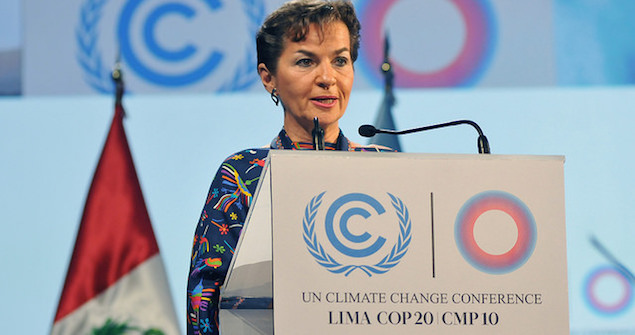Wind in the Sails for Lima?

After two weeks of negotiations, the Lima 20th Conference of the Parties (COP20) of the UN Framework Convention on Climate Change (UNFCCC) has produced a number of questions.
Did the optimism surrounding this round of climate talks translate into actual momentum for the formation of an agreement for meaningful action on climate change? Or, did all the wind leave the sails once the details started getting in the way Will these talks result in little more than hot air?
Christina Figueres, executive secretary of the UNFCCC, said recently that “what happens in the year leading up to the Paris agreement is going to do more to determine the quality of life of generations to come than anything that has ever happened before”. She stressed the importance of the Lima conference as the last meeting before the much-awaited COP 21 in Paris at the end of 2015, where the Parties have agreed to negotiate a legally binding treaty with ambitious emissions reductions targets.
The main aim of Lima was to draft what a binding agreement might look like, to be signed in Paris next year. There was unprecedented optimism in the lead up to the conference, but University of Melbourne Associate Professor Peter Christoff argues that “the optimism established by the joint US-China announcement before the G20 meeting was dissipated as developed and developing countries fell back into their trenches.”
This historical tension has always existed between industrialised countries, who have contributed proportionally more to emissions in the past, and developing countries, who argue they only want to ‘catch up’. Developing countries assert that they shouldn’t have to limit their growth, or cap their emissions, when they have the same right to industrialise as developed countries had in the past. After the US/China deal in November, there was hope that these tensions were subsiding, and that the binary was dissolving for many major industrialising states like China, India and Brazil – but these hopes now seem unfulfilled.
Developing countries also pushed for greater focus on adaption and protection from the inevitable impacts of climate change (which are predicted to affect developing countries disproportionately). Developed countries focused more on mitigation strategies.
One significant step was progress on the Green Climate Fund to help developing countries with mitigation strategies. The Green Climate Fund reached its initial target of US$10 billion, with an aim of raising another US$10 billion by 2020. Australia has committed US$200 million so far, a contribution that was seen by many as meagre.
Australia was also criticised for its emissions and lack of effort to curb them. In a report released at the conference, Australia was named the worst-performing industrial country on climate change, and the second-worst in the world, second only to Saudi Arabia.
What’s more, the major emissions reductions commitments so far – from the US, EU and China – are not enough. They don’t set the world on a trajectory for limiting warming to below 2 degrees, and many scientists argue that the targets are not ambitious enough.
So while some of the wind has left the sails, how can we think about Lima as a stepping stone to the Paris COP21? Since Paris is considered by most to be the globe’s last chance to curb emissions to the point of avoiding dangerous climate change, and limiting warming to two degrees, should we still feel hopeful that a binding and ambitious agreement is possible in Paris?
The UNFCCC is still optimistic, saying that the Lima Call for Climate Action (the central document produced at the summit) “puts the world on track to Paris 2015”. Climate activists were pleased that the goal of achieving net-zero emissions by 2050 was referenced, and that the draft has maintained the goal of limiting warming to two degrees. However the text does not clarify how the new deal would be legally binding and doesn’t outline how climate finance would be funded sustainably.
While it might not have seen everyone’s hopes realised at the conference, this outcome can be still be called a step in the right direction. The Green Climate Fund is growing, and we will hopefully hear about the Intended Nationally Determined Contributions (INDC’s) from most other countries (including Australia) by the first quarter of 2015. Pressure is mounting on Australia to change its approach to climate change action.
When it comes to collective global action, time will tell: this is a slow burn. Paris will be the true test, but hopefully there will be progress before then: behind the scenes, in climate change diplomacy and in public advocacy and campaigning, in a way that maintains the momentum of this year and irons out any continuing tensions between different negotiating blocs.
This needs to be done this in the next 12 months because, as Figueres says, Paris could potentially be the make-or-break: it could decide the fate of future generations and be the most important year to determine the legacy that we leave for those who will inherit the planet.
Siobhan Neyland is a research intern at the AIIA National Office. She can be reached at siobhan.neyland@gmail.com. This article can be republished with attribution under a Creative Commons Licence.


